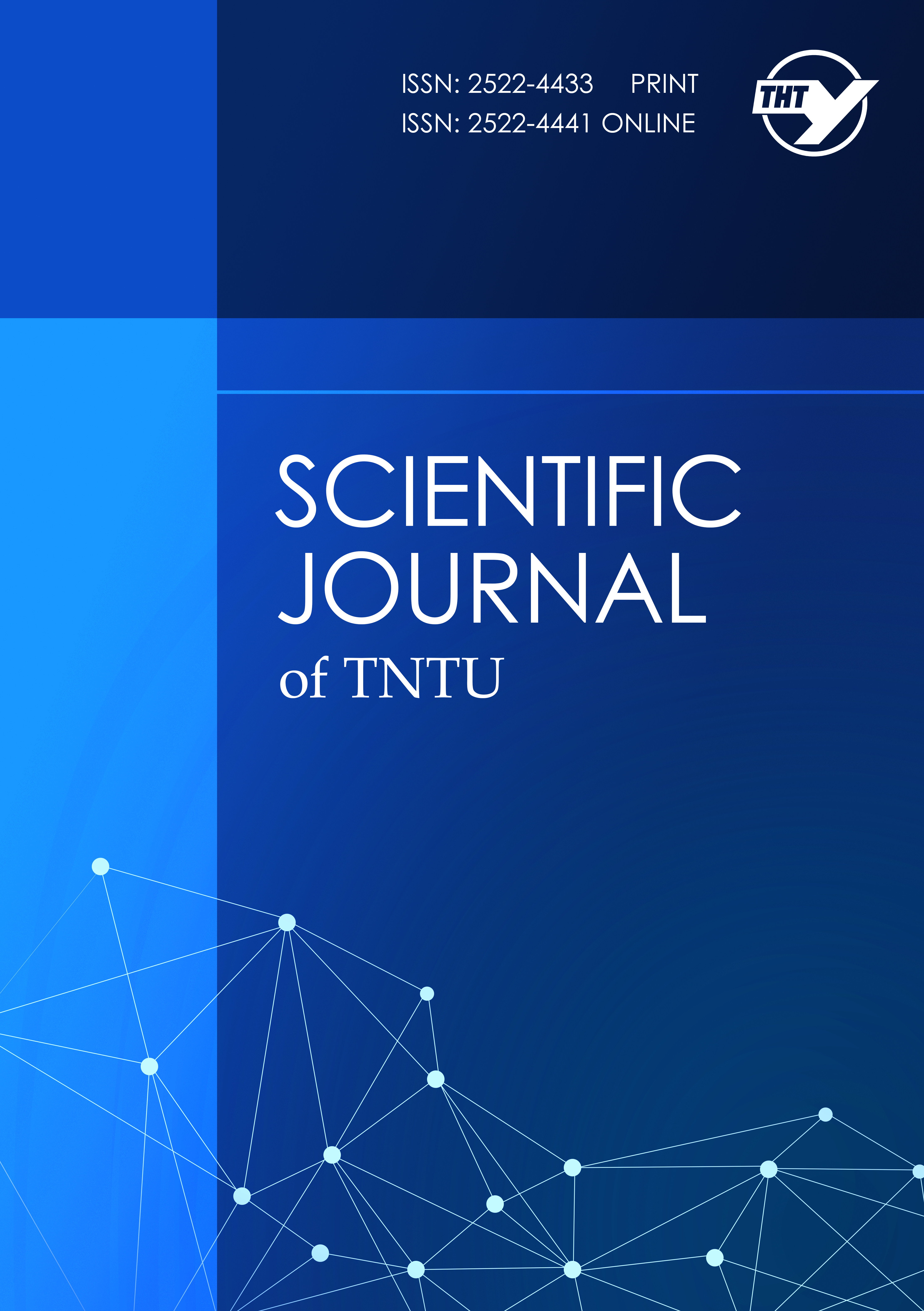Method for improving the efficiency of operation and repair of water transport using the newest epoxy plastics
Main Article Content
Abstract
Today, in order to improve the efficiency of operation and repair of water transport vehicles, it is important to apply a method that involves the use of the latest reactoplastics that can operate at high temperatures. Here, it is important to activate epoxy compositions by introducing active additives such as microdispersed filler into the oligomer. This allows for a simultaneous increase in the mechanical properties of the materials. In addition, the cohesive strength is crucial for the thermal properties of epoxy composites, which is especially important for the water transport vehicles operating in different time zones. Therefore, research in this area is relevant today. In this paper, the optimal content of synthesised and physically active dispersed filler in an epoxy oligomer was determined by the criteria of thermophysical properties, such as heat resistance and coefficient of thermal expansion of polymer composites. Epoxy resin was used as the basis for the formation of polymer compounds. The compositions were crosslinked with PEPA hardener. A titanium aluminium powder was used as a filler. It was determined that in order to form materials with improved performance characteristics, it is necessary to add a charge powder to the epoxy resin at a content of 0.5 % per 100 % of epoxy resin. Obtaining such a composite can significantly increase the heat resistance, glass transition temperature and reduce the CTE of protective coatings. This was considered to be caused by the influence of the microdispersed additive on the microheterogeneous structure of the developed materials. On the other hand, it is the structure that determines the cohesive strength of materials and is the basis for further adjustment of their thermal and physical characteristics. As a result, the degree of gelation of the materials increases, which implies an improvement in the thermal properties of the developed materials to increase the efficiency of operation and repair of water transport vehicles
Article Details
Issue
Section

This work is licensed under a Creative Commons Attribution 4.0 International License.
References
1. Dobrotvor I. G., Stukhlyak P. D., Mykytyshyn A. G., Stukhlyak D. P. (2021) Influence of Thickness and Dispersed Impurities on Residual Stresses in Epoxy Composite Coatings. Strength of Materials, 53 (2), pp. 283–290. https://doi.org/10.1007/s11223-021-00287-x
2. Dobrotvor I. H., Stukhlyak P. D., Buketov A. V. (2009) Investigation of the formation of external surface layers in epoxy composites. Materials Science, 45 (4), pp. 582–588. https://doi.org/10.1007/s11003-010-9217-0
3. Moroz K. M., Stukhlyak P. D. (2011) Influence of porosity in the epoxy matrix-polyvinyl alcohol-disperse filler system on the impact toughness. Materials Science, 46 (4), pp. 455–463. https://doi.org/10.1007/s11003-011-9312-x
4. Stukhlyak P. D. (1986) Antifriction and adhesive properties of coatings of thermosetting plastics modified with thermoplastic polymers. Soviet Journal of Friction and Wear (English translation of Trenie i Iznos). 7 (1), pp. 138–141.
5. Totosko O., Stukhlyak P., Mytnyk M. et al., (2022) Investigation of Corrosion Resistance of Two-Layer Protective Coatings. Challenges to National Defence in Contemporary Geopolitical Situation, 2022 (1), pp. 50–54. https://doi.org/10.47459/cndcgs.2022.6
6. Stukhlyak P. D., Bliznets M. M. (1989) On the influence of metal oxides on the wear resistance of modified epoxy resins. Soviet Journal of Friction and Wear (English translation of Trenie i Iznos). 10 (3), pp. 70–73.
7. Miroshnichenko D., Lebedev V., Riabchenko M. et al. (2023) Use of the Graphite to Obtain Composites for Absorbing Electromagnetic Radiation. Petroleum and Coal. 65 (3), pp. 718–723.
8. Sapronov O., Maruschak P., Sotsenko V., Buketova N., Bertem A., Sapronova A., Prentkovskis O. (2020) Development and Use of New Polymer Adhesives for the Restoration of Marine Equipment Units. Journal of Marine Science and Engineering. 8 (7), p. 527. https://doi.org/10.3390/jmse8070527
9. Sapronov Q. O., Dyadyura K., Vorobiov P. O., Sharanov V. D., Karpash M. O, Bishchak R. T., Hrebenyk L. (2023) Corrosion-Resistant Epoxy Coatings Filled with Nanoparticles of Vegetable Origin to Protect Water Vehicles. Journal of Nano- and Electronic Physics, 15 (5), pp. 1–7. https://doi.org/10.21272/jnep.15(5).05025
10. Cho Soo Hyoun, R. Scott, V. Paul, (2009) Self‐healing polymer coatings. Advanced Materials, 21 (6), pp. 645–649. https://doi.org/10.1002/adma.200802008
11. Shaffer E. O., McGarry F. J., (1996) Lan Hoang. Designing reliable polymer coatings. Polymer Engineering & Science, 36 (18), pp. 2375–2381. https://doi.org/10.1002/pen.10635
12. Momber A., Irmer M., Gluck N. Performance characteristics of protective coatings under low-temperature offshore conditions. Part 1: Experimental set-up and corrosion protection performance. Cold Reg. Sci. Technol, 127, 76–82 (2016a). https://doi.org/10.1016/j.coldregions.2016.03.013
13. Buketov A. V., Dyadyura K., Shulga Yu. M., Sotsenko V. V., Hrebenyk L., Pastukh O. A., Zhytnyk D. V. (2024) The Method of Increasing the Mechanical Characteristics of Sea Transport Vehicles due to Environmentally Friendly Nanomodification of Epoxy Composites. Journal of nano- and electronic physics, 16 (4), 04027 (10pp). https://doi.org/10.21272/jnep.16(4).04027
14. Buketov A. V., Shulga Yu. M., Fesenko I. P., Bezbakh O. M., Pastukh O. A. (2024) Increasing the Lifetime of Water Transportation Vehicles by Using Multifunctional Composites with a Polymer Matrix, Ultradisperse Diamond, and Discrete Fibrous Filler. Journal of Superhard Materials, 46 (1), pp. 40–54. https://doi.org/10.3103/S1063457624010027
15. Rakha S. A., Ali N., Haleem Y. A. et al. (2014) Comparison of Mechanical Properties of Acid and UV Ozone Treated Nanodiamond Epoxy Nanocomposites. Journal of Materials Science & Technology, 30 (8), pp. 753–758. https://doi.org/10.1016/j.jmst.2013.12.011

